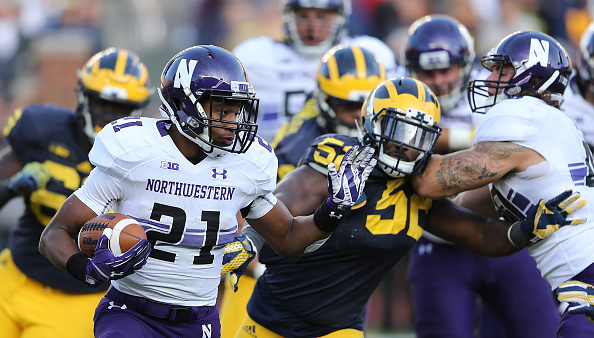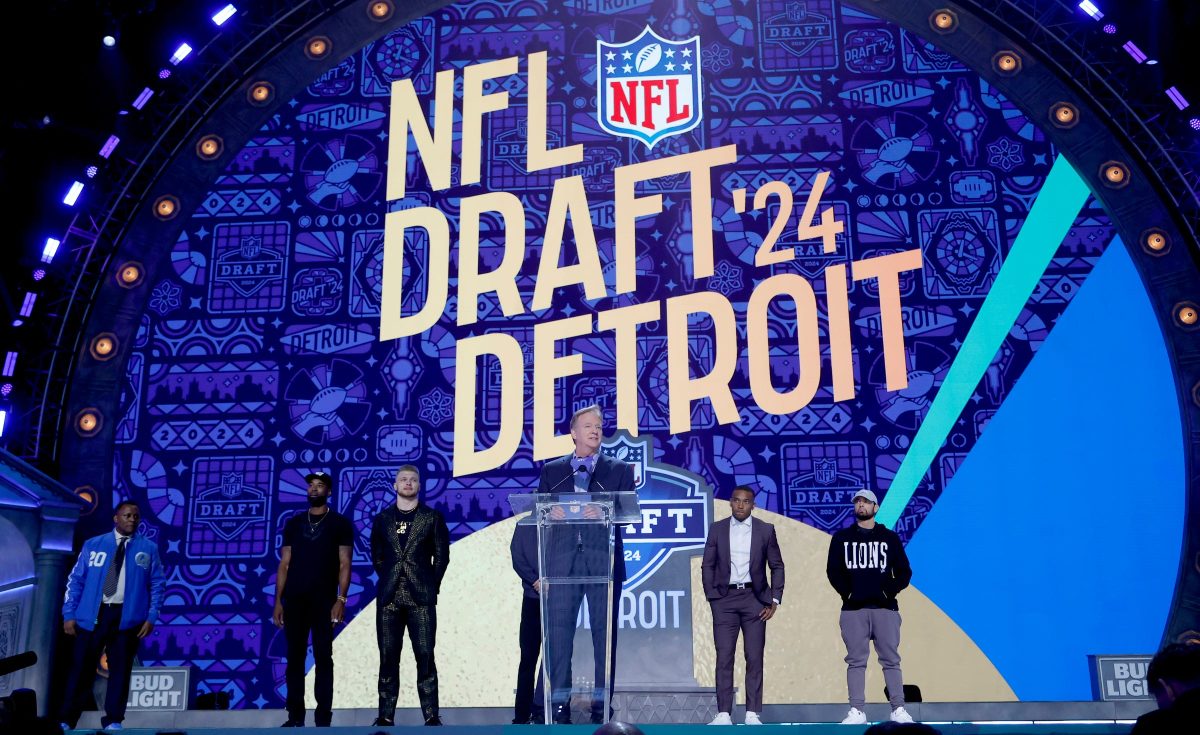The Big Ten is about to send college sports revenue into the stratosphere. According to a report from Sports Business Daily, the conference is working on a deal with FOX to broadcast about half of the league’s first-tier rights games, worth $250 million per year.
That’s a whopping increase from the rights package this season, when ESPN and CBS collectively paid $112 million for the rights to every first-tier game.
If this deal ends up going through, and if the other half of the deal is worth the same as this one, then the Big Ten’s first-tier rights will be worth $500 million per year — almost five times more than they were this past season.
That’s a lot of money for the conference, but it also means far more money per school than any school has ever seen from a media rights deal.
According to documents obtained from Ohio State, full Big Ten members — all but Maryland, Nebraska and Rutgers — were each given a total of $21.5 million from all of their media rights deals in 2015. All fully-integrated Big Ten members receive the same payout.
Here’s the information from Ohio State via a Freedom of Information Request in trying to learn more about the Big Ten’s revenue distributions to the conference.
TV + BTN profit shares: $21,499,346
NCAA: $4,443,096
Bowl: $4,723,939.44
Big Ten MBB Tourney: $405,580
Big Ten FB Championship Game: $335,402
Total: $32,407,363
In 2018, Big Ten schools will receive roughly $17.8 million just from half of the conference’s first-tier rights, not even including revenue from the Big Ten Network. If the rest of the first-tier rights are sold for a similar package, each Big Ten school will receive roughly $35 million in first-tier rights alone.
The Big Ten allocates almost all of its revenue — not just from TV money — to schools. According to its 2013 tax forms, the conference brought in $338.9 million. $317.2 million was distributed to the schools, while roughly $19 million was spent on conference salaries and other expenses.
Big Ten schools received an average of roughly $8 million from first-tier rights in 2015. However, given that Maryland, Rutgers and Nebraska only received partial shares, the other Big Ten schools made a bit more — somewhere around $9 million (the exact first-tier rights numbers were not made available, but we can come very close to an estimate, based on what the three expansion members received). So that means first-tier rights are likely about to increase by, for the long-time Big Ten members, $25 million per year.
Considering that first-tier rights were only worth roughly $9 million to Ohio State — and by extension, all full Big Ten members — and the Buckeyes got $21.5 million in TV money, that means hoards of money from other media sources, like the Big Ten Network, will add on to the whopping $35 million per school number.
The Big Ten Network is likely increasing in profitability every year, as many of the costs for running a network are fixed. But even if BTN profits stay stagnant — they won’t — the gap between first-tier rights and total television revenue is still around $12.5 million per school.
So let’s add all that up:
| Year | 2015 | 2018 |
| First-tier rights (full members) | ~$9 million | ~$35 million |
| Other rights and BTN | ~$12.5 million | ~$12.5 million (or more) |
| College Football Playoff | $4.7 million | $4.7 million |
| NCAA distribution | $4.4 million | $4.4 million |
| Big Ten Tournament and Championship Game | $740,000 | $740,000 |
| Total | $32,407,363 | ~$57 million |
These are projections, and the exact figures for the Big Ten Network are still unknown, but given what we know now, and what the Big Ten’s full first-tier rights package is expected to look like, we can comfortably say that the conference will be making far more than the previous projection of $44.5 million per school.
At the very worst — assuming BTN profits don’t grow, which is incredibly unlikely — the Big Ten should be able to distribute roughly $47 million per school in 2017-18, just from media rights alone. That’s double what it distributed in 2015, and more than previous projections for the entire distribution once this new deal hit.

It’s very possible that by 2017-18, the Big Ten could be distributing $60 million total per school. That’s almost double the $32 million that each school received in 2015. It’s also over $40 million more than Big Ten schools were receiving just a decade ago.
Big Ten commissioner Jim Delany’s threat that the conference could move to Division III if forced to pay players looks even more laughable now, and college sports leaders must answer where all of that money is going if not to the athletes.
Many costs in college football are fixed, and schools aren’t adding legitimate expenses — like new sports — to keep up with that kind of revenue. It’s impossible for a Big Ten school to claim that it legitimately needs $25 million more in 2018 than it did in 2015 in order to survive.
Since Big Ten schools are nonprofits, they are not allowed to make a profit, which is much harder to accomplish or to justify with tens of millions of additional television revenue coming to the universities. Therefore, they will find ways to spend that money lavishly, like on coaching salaries, administrative pay and shiny new facilities, to make it look like they still run a deficit.
Most significantly, nearing a $30 million bump in revenue, can these schools and conferences continue to implement a system where the athletes themselves aren’t able to attain a share of the massive increase in wealth?






Comments are closed.